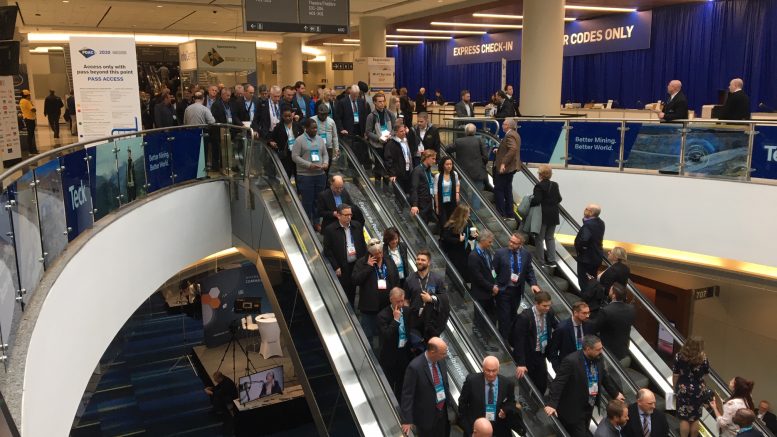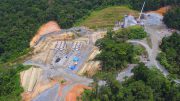The middle of March is a depressing time in the calendar, and not just because it means the annual PDAC conference is over. Ever since William Shakespeare wrote Julius Caesar in 1599, we have associated this time of the year with a warning; “Beware the Ides of March” (Caesar was assassinated on Mar. 15, 44 BC).
We trace our calendar back to the Roman Republic, although the Romans did not number each day of the month from first to last, rather they counted back from three fixed points of the month. Kalends was day 1, Nones was day 7 and Ides was day 15 (‘Ides’ derives from the Latin for divide). Hence, days 2-6 in every month were described as “before the Nones,” days 8-14 were “before the Ides,” and the remainder were “before the Kalends” of the next month.
In Rome, the Ides of each month was a deadline for settling debts, and the Ides of March (Idus martiae) was marked by religious ceremonies. Despite Shakespeare’s best efforts, the middle of March is not historically a particularly risky time of the year for investors. Nevertheless, because the Prospectors & Developers Association of Canada has just held its convention, it is an opportune time to remind potential mining investors of the risks involved.
For equities generally, strategists at Morgan Stanley are amongst analysts to have warned that this is a “high risk month for the bear market to resume.” Morgan Stanley recently told clients that, after a slew of data showing the economy in a much more precarious position than previously believed, the stock market “could be poised for another forceful plunge in March.”
Mining equities follow a different cycle from shares in other industries, of course, but it is a cruel one.
Taking a long-term perspective, demand for iron ore, copper and other energy transition metals seems assured. Unfortunately, rising demand for mined commodities inevitably encourages investment in new supply. There is then pressure on the price of metals and minerals, which has a disproportionate impact on mining profitability (given that many of the mine development costs are fixed). Funds raised to finance an increase in production can turn out to have been inefficiently deployed, forcing companies to alter their development plans and reduce costs.
As I wrote in this column two years ago, investors need to be wary of what they’ve heard during corporate presentations at the Metro Toronto Convention Centre.
For many professional investors, the calibre of the management team at a mining company is the most important element in an investment decision. However, the location of that company’s assets comes a close second because mining is a politically vulnerable business (unlike factories, you cannot move mineral deposits); witness First Quantum Minerals’ recent travails in Panama.
Related to the location issue is whether the company has a licence to operate and benefits from ongoing local support. This will be linked to the company’s operating track record, particularly in that region, and how it has handled public relations.
Investors also need to decide on what level of diversity they require in terms of the commodities and countries in which the target company operates. Corporate concentration on a single metal and/or jurisdiction allows greater focus and expertise, but is of course riskier (the ‘eggs in one basket’ adage springs to mind).
Size also matters. Larger companies are better insulated from market shocks, and can ride out any drought in the availability of finance. Investors in junior companies with a late-stage development, or mine, should also be aware that high cost operations can become suddenly uneconomic if the metal price falls.
Investors should look for management with ‘skin in the game’ (i.e. they own equity, rather than just share options), are able to articulate their plans to create shareholder value and have the ability to generate investment returns (preferably with experience in the operating country/commodity).
In mining there is a danger that the marketing hype, particularly for gold explorers, runs well ahead of the asset’s potential. In particular, investors should watch out for ‘near-ologists’ (deposits are not necessarily continuous) and those executives who follow trends (companies that jump between metals/countries).
Avoid promoters (generally speaking, the more gold on them, the less is likely in their deposit), perpetual optimists (management need to know when to bail out) and companies with overpaid executives (who should only be rewarded for results).
March is named after Mars, the Roman god of war. As Martius, it was the first month of the Roman year until 153 BC, and marked the beginning of the season for warfare. An auspicious time then for investors to go into battle but they should avoid Caesar’s fate by staying wary, and listening to whispered warnings.
Dr. Chris Hinde is a mining engineer and the director of Pick and Pen Ltd., a U.K.-based consulting firm. He previously worked for S&P Global Market Intelligence’s Metals and Mining division.




Be the first to comment on "The View from England: PDAC is over — time for would-be investors to reflect "